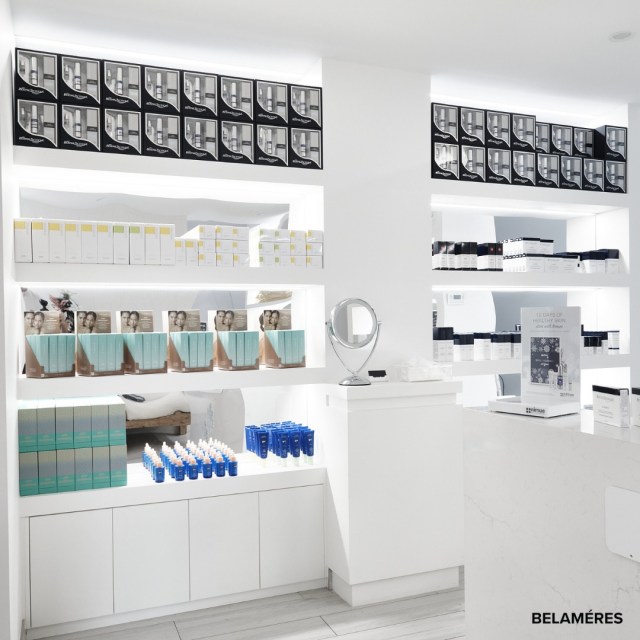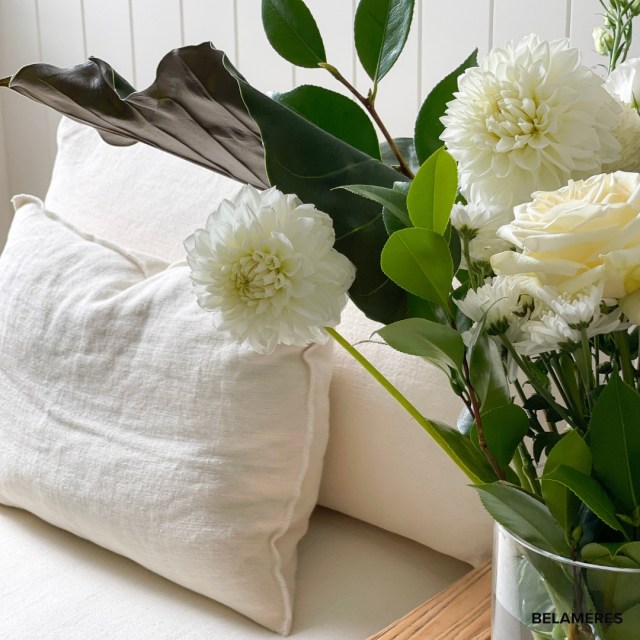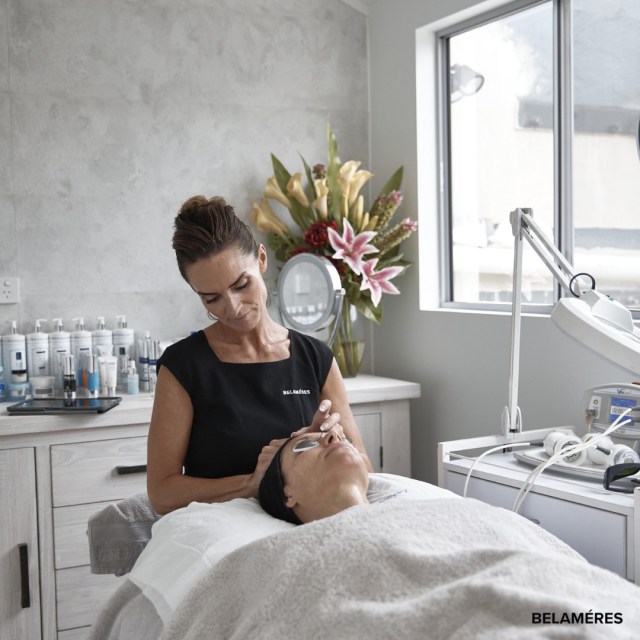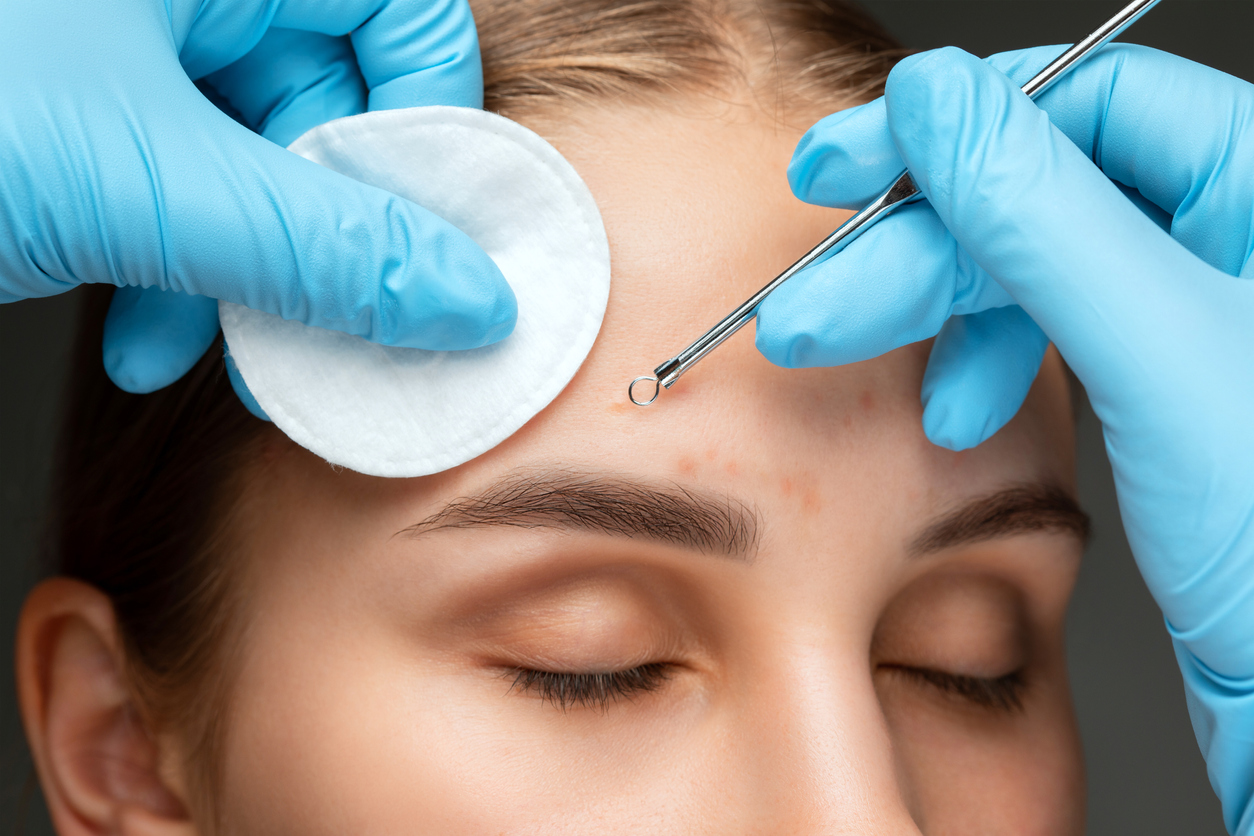Conducting manual extractions is a divided topic in the Australian beauty industry landscape. Speak to any skin therapist, and their opinion on the subject will likely skew from a clear ‘yes’ to an ‘absolutely not’.
While videos of pimples popping and digging out blackheads may enthuse our clients over social media, the reality of interrogating an already inflamed epidermis can make any trained esthetician’s skin crawl.
These days, manual extractions aren’t always conducted by squeezing, picking or probing. Modern professional devices allow therapists to clear out pores with little interference by the hands of the skin therapist. But what about those who continue to kick it old school and tackle excess sebum at the source?
Carina Gross is the owner of esteemed Sydney salon, BELAMÉRES. She’s an advocate for manual extractions if there is a need for it and if they are performed correctly. “The goal is to use hardly any pressure to avoid downtime and discomfort,” Carina told Professional Beauty.


Carina, a German-native, conducted her training abroad 25 years ago. She attended a private beauty school situated in Hannover, two hours south of Hamburg. Her degree ran for two years – in contrast, Carina said, to some Australian graduates whose unregulated courses don’t exceed a few months. “[When it comes to extractions], I believe practice makes perfect. I’ve had lots of practice in over 25 years… learning how different skins can be.”
On taking a visit to BELAMÉRES recently, Carina told PB of how few Australian therapists perform manual extractions today. “I believe that most therapists never learned how to do it properly, as I’ve never come across a school that teaches my technique. I’ve trained over 100 therapists since I’ve been in Australia and only a handful were able to implement my technique. I believe too much can happen if you do it wrong and therefore, most therapists are afraid of making mistakes.”
“Most therapists are afraid of making mistakes.”
In order to best understand the manual extraction process, Carina advised therapists should expect six months to two years of practice. “Every skin is different, and while oily skins are much easier to extract, sensitive and dehydrated skins are more difficult. You’ll have to be very careful not to cause inflammation in the skin; [this can] cause hyperpigmentation once it heals.”
BELAMÉRES therapists use sterile blood lancets to gently open the pore, followed by a combination of stretching and lifting techniques to remove the congestion out of the skin. “We also use our low level laser straight after to speed up healing,” Carina added. “Most clients walk out as if nothing happened. When clients have had extractions somewhere else, therapists have squeezed so hard they can’t then leave their house for a week!” The team work with milias, blackheads, congestion and inflamed cysts, practicing different extraction methods depending on type.

When it comes to how regularly clients should undergo manual extractions, Carina recommended fortnightly for active breakouts or excessive congestion. “All our treatments are tailored and we check our clients’ skin before deciding which treatment is the best on that day. For example, if a client is booked in for skin needling but recently had a breakout, we would clear the congestion first and perform a needling treatment one to two weeks later once the skin is healed.”
“We’ve seen many clients coming to us who’d had needling treatments at other clinics before clearing the congestion/breakouts/acne and their skin usually got worse. We try to educate our clients so that they understand why we work differently.”
Read the current issue of our digital magazine here:
- For more news and updates, subscribe to our weekly newsletter
- Follow us on Instagram
- Like us on Facebook
- Join Australia’s largest network of beauty industry professionals on LinkedIn
- Subscribe to our print magazine
Have an idea for a story or want to see a topic covered on our site and in our pages? Get in touch at info@professionalbeauty.com.au.

